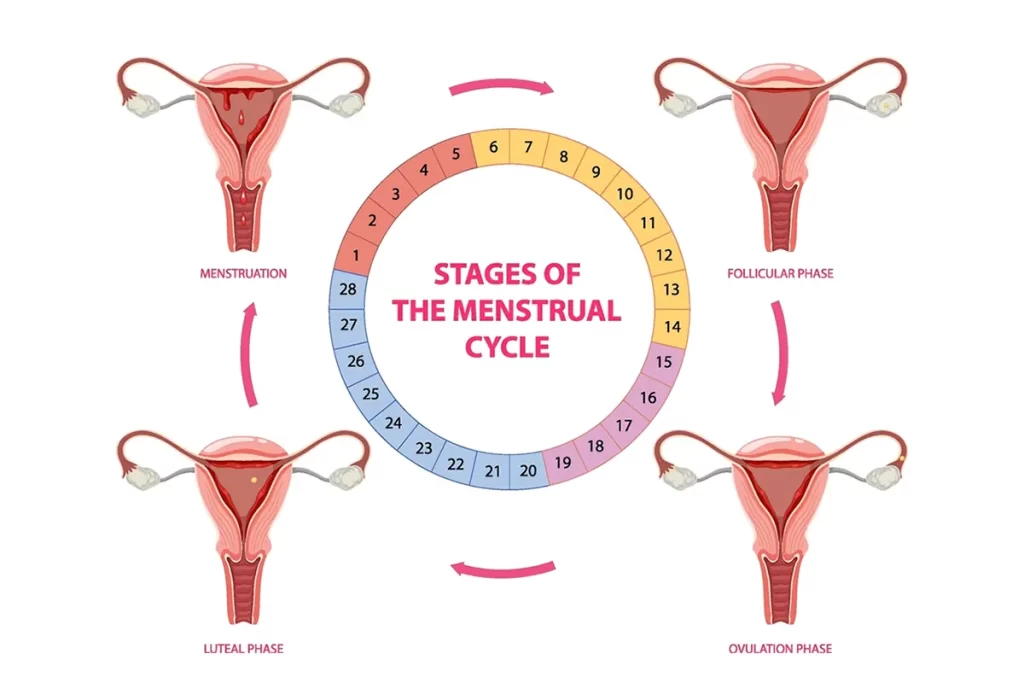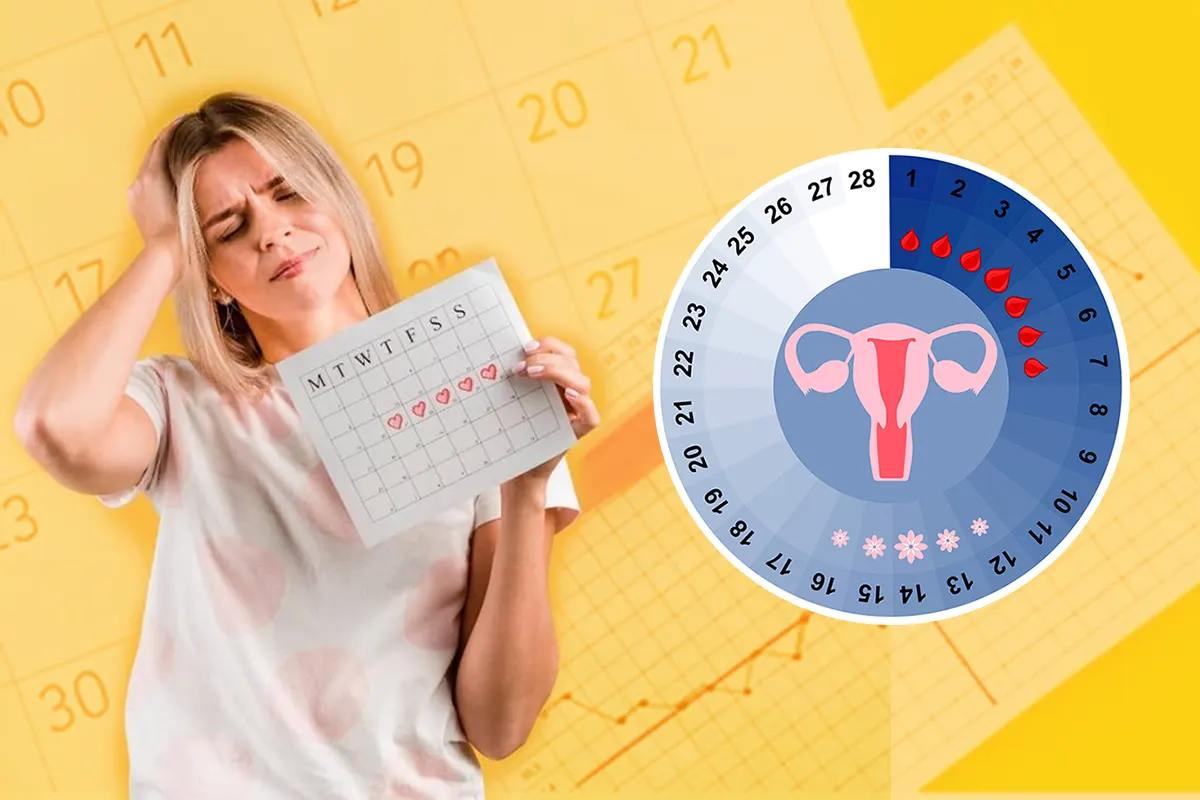Period Calculator: Know Your Fertile Days Easily
Have you ever wondered when your next period will start and whether you can enjoy that upcoming big day without all that struggle? Or are you planning a baby and want to know which days of the month you will be the most fertile? All you need is a period calculator! With this simple tool, you can keep track of your cycle without confusion.
But how exactly is a menstrual cycle calculator used? What information does it provide? Let’s walk you through all these things in detail!
Period & Ovulation Calculator
How to Use an Advanced Ovulation Calculator?
If you want to calculate next period, you will need the following details:
- The first day of your last period, that is, the day your last period started.
- The average length of your cycle, that is, the number of days between your two periods.
You need to feed these details into our perfect ovulation calculator and click on the “Calculate” button. Then, you will get the day of your ovulation.
Your chances of conceiving are very high during ovulation and the 4 or 5 days leading up to it. So, if you are trying to conceive, you must have intercourse during these days. But if you are willing to avoid pregnancy, you can use it as a safe days calculator and abstain from having unprotected sex during the fertile window.
Important Note: This accurate period calculator is not meant to be used by pregnant women.
Also Read: Best IVF centre in Mumbai
Understanding the Phases of the Menstrual Cycle
Let us walk you through how the menstrual cycle works, that is, the science behind it:

- A complete menstrual cycle is between the first day of your last period and the first day of your consecutive period.
- Usually, a woman’s menstrual cycle is 28 days long. However, it is considered normal to have a cycle that is 21 to 40 days long.
- As your cycle begins, your egg also starts to mature in the ovary.
- Your body prepares itself for fertilization, which is why the lining of your womb starts gradually thickening. This is where the implantation will take place if you conceive.
- Around 12 to 16 days before your next period is going to begin, the ovulation occurs, which means that your egg is released. This is the date that your ‘track my period calculator’ will display.
- During this phase, your cervical mucus gets thin and clear. This is essential for facilitating the sperm to reach your egg.
- When you have unprotected sex and sperm is present during the release of the egg (for the next 24 hours), there is a chance of fertilization.
- However, if the egg is not fertilized (that is, there is no pregnancy), there is a drop in hormone levels, and the womb lining starts to shed (blood and tissue). This marks the beginning of your next period.
For a 28-day cycle, ovulation takes place on the 14th day of the cycle. However, this changes with your average cycle length. For example, if your cycle lasts only 24 days, you will ovulate on the 10th day.
Can I Use the Ovulation Calculator for Irregular Periods?
The period cycle tracker is usually only accurate if you have regular periods, that is when you have your period within 1 or 2 days of your due date. However, if you have irregular periods, it is hard to calculate your ovulation date.
So, if you cannot use a 30-day cycle ovulation calculator or a 35-day cycle ovulation calculator because your cycle is irregular, you need to use other ways to analyze when you may be ovulating. This includes looking for signs of ovulation in your body.
Signs of Ovulation That You Should Know About
Women often wonder how to calculate period cycles or know when they are ovulating if their periods are irregular (because they can’t use a period calculator in this case). If you are one of these women, here are some signs of ovulation you must know about:
- Your basal temperature may increase by a degree (or half a degree) when you are ovulating. You can easily measure this using a thermometer at home.
- The levels of Luteinizing Hormone (LH) will also increase. You can use a home ovulation kit (or an ovulation predictor kit) to check the LH hormone level in your body. This kit proves to be an excellent help if you can use a safe period calculator to avoid pregnancy.
- Your cervical mucus (commonly known as the vaginal discharge) also becomes clearer, thinner, and stretchier (like an egg white) when you are ovulating. So, if you are wondering how to test ovulation naturally at home, keeping track of the look and feel of your vaginal mucus is a great idea.
- Some other common signs of ovulation include:
- Slight cramping on your side
- Spotting
- Breast tenderness
- Bloating
The Best Time to Conceive: Which Days of the Month Should You Try Getting Pregnant?
Usually, there are 6 days in a month when your chances of getting pregnant are higher. This is known as the “fertile window.” But where exactly does the fertile window lie in your menstrual cycle? Let’s try to understand.
The ovulation date you get using a period calculator is the day when the egg is released from your ovaries. You are most fertile on this day and the 4 to 5 days near this date. So, if you and your partner are ready for pregnancy, it is recommended to have regular unprotected sex during these 5 to 6 days.
How to Increase Your Chances of Getting Pregnant? Some Valuable Tips
Now that you know what a period calculator is and how it works, let us give you some tips that will help you increase your chances of pregnancy:
- Use a reliable period cycle calculator to know when your ovulation will occur.
- Have unprotected sex regularly and frequently. Sperm can survive for up to 5 days in a female body. It is considered the best idea to have sex 2-3 days before your ovulation date and 2-3 days after you think you have ovulated.
- Maintain a healthy body weight to increase your chances of conceiving.
- Keep stress to a minimum, especially on days when you are trying to get pregnant.
- It has been found that 33% of fertility issues are associated with the male partner, 33% with the female partner, and the remaining 33% with both partners. Hence, it is essential that both you and your partner improve their reproductive health by managing medical conditions and improving their lifestyles.
If you and your partner are not yet ready to welcome a baby in your life, it is best that you use a safe period calculator and manage your sex life accordingly.
Stay Informed About Your Reproductive Cycle: Use the Best Ovulation Calculator in India
Say goodbye to guessing and stressing over when you will ovulate; use our quick and handy period calculator to effortlessly track your cycle. Our easy-to-use tool is the best help you need, whether you are trying to conceive, want to track your period, or know your safe days. Use the power of knowledge, plan, and take charge of your reproductive health effortlessly!
Frequently Asked Questions
When does ovulation occur in the menstrual cycle?
Ovulation (or the release of an egg) occurs 12 to 16 days before the first day of your upcoming period.
What are the details required to track my ovulation date using a period calculator?
To get your ovulation date using a period cycle calculator, you need to know the date when your last period started and the average number of days between your two periods.
Can pregnant women use an ovulation calculator?
No. An advanced ovulation calculator is not meant for pregnant women.
When can I have sex if I want to get pregnant?
It is recommended that you have frequent unprotected sex 2-3 days before your ovulation, on the day of your ovulation, and 2-3 days after your ovulation.
Will a period calculator online give accurate results if my periods are irregular?
No. If you have irregular periods, you won’t know the exact length of your menstrual cycle, which is an essential factor for calculating your ovulation date. However, you can look out for the different signs of ovulation in your body to analyze when your ovulation is happening.

